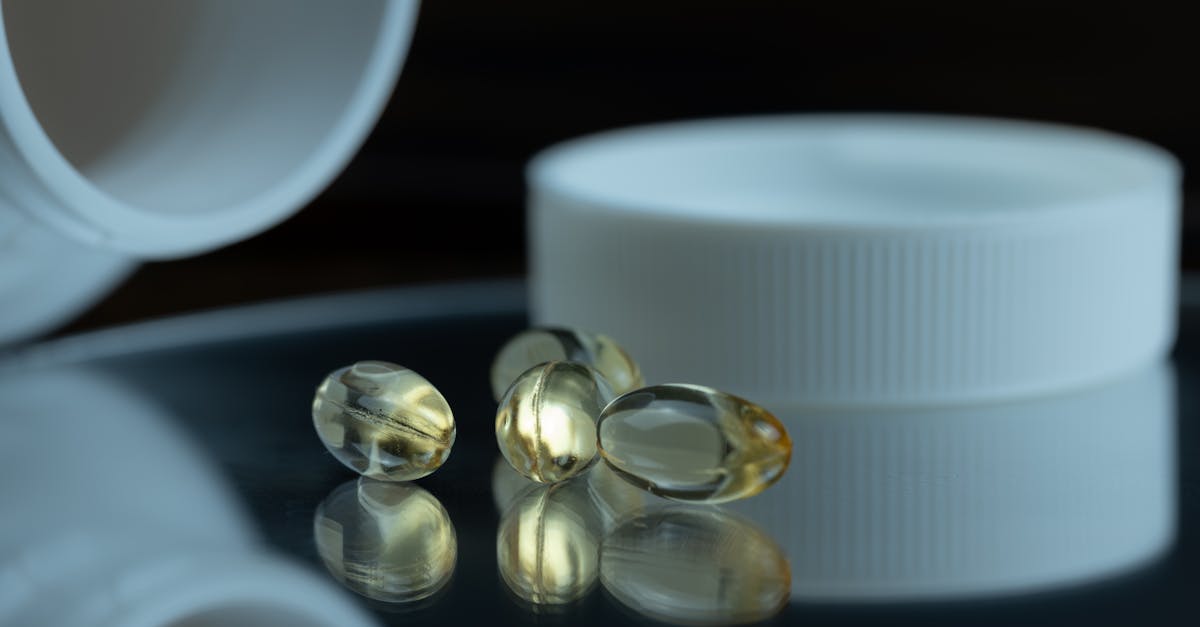In Short, the Anti-Inflammatory Diet is a dietary approach designed to minimize inflammation in the body, which may significantly reduce the frequency and severity of migraines. This diet emphasizes the consumption of whole foods such as fresh fruits and vegetables, whole grains, and fatty fish that are known for their anti-inflammatory properties. By integrating these foods into daily meals, individuals can experience fewer headache episodes, improved overall health, and enhanced well-being. The effectiveness of the diet stems from its capacity to combat underlying inflammation, which is often linked to migraine triggers, offering a promising solution for those affected by chronic migraines. |
The Anti-Inflammatory Diet has gained attention for its potential in reducing migraines. Research suggests that a diet abundant in fresh fruits, vegetables, whole grains, and omega-3 rich fish can play a significant role in decreasing the frequency of migraine attacks. These foods are known to combat inflammation, which is often linked to migraine exacerbation. By incorporating dietary adjustments that prioritize anti-inflammatory properties, individuals may experience a notable improvement in their migraine symptoms.

At Pulse Align, we offer a gentle, innovative method designed to restore the body’s natural balance and posture through imperceptible pulses. This unique approach promotes muscle tone symmetry, which often leads to a natural reduction in tension and discomfort, enhancing your overall well-being.
A Gentle Journey to Recalibration
Our technique focuses on the body’s innate ability to recalibrate without directly addressing discomfort or conditions. The gentle stimulation provided by Pulse Align encourages your body to find its equilibrium, often resulting in improved comfort and better posture.
Personalized Support for Everyone
We pride ourselves on our personalized approach that caters to the needs of each client. Clients from various backgrounds have shared their inspiring stories of improvement in muscle tension and postural balance. They often express a newfound sense of wellness and ease, illustrating how our services can support a family-focused wellness journey.
Your Invitation to Explore Wellness
We invite you to visit our website to learn more about how our services can benefit you and your family. Whether you are in La Prairie, Mont-Royal, or Terrebonne, finding a nearby clinic has never been easier. Discover the Pulse Align difference and book a consultation today. Remember, our approach works hand-in-hand with your current healthcare services, ensuring that you achieve holistic wellness in a safe and nurturing environment. For more information on our locations, visit Pulse Align Locations.
Join us in enhancing your well-being with a safe, non-invasive, and family-friendly approach at Pulse Align.
- Foods to Include: Fresh fruits and vegetables
- Whole grains: Oats, barley, bran
- Healthy fats: Olive oil and avocados
- Omega-3 rich fish: Salmon and sardines
- Herbs and spices: Turmeric and ginger
- Stay hydrated: Drink plenty of water
- Avoid processed foods: Minimize intake of additives
- Caffeine moderation: Limit to small amounts
- Regular meal patterns: Prevent hunger-induced headaches
- Identify trigger foods: Maintain a food diary

The anti-inflammatory diet has emerged as a pivotal approach in managing and potentially reducing the frequency and severity of migraines. This dietary strategy emphasizes the consumption of foods that combat inflammation, which is believed to play a significant role in the onset of migraines. Understanding how to incorporate an anti-inflammatory diet into daily life can empower individuals suffering from migraines and provide them with effective coping strategies.
Understanding Inflammation and Migraines
Migraines are not just simple headaches; they are a complex neurological condition often linked to inflammation within the body. This inflammation can be triggered by various factors, including stress, hormonal changes, and certain foods. Studies have shown a direct association between dietary choices and the inflammatory response, making it crucial to examine the types of food consumed.
Inflammatory Foods to Avoid
Specific foods are known to exacerbate inflammation and, consequently, migraines. These include processed foods, high sugar items, and certain preservatives. Additionally, common migraine triggers such as aged cheeses, alcohol, and artificial sweeteners should be minimized. Avoiding these foods could lead to a significant reduction in migraine occurrences.
Key Components of the Anti-Inflammatory Diet
The foundation of an anti-inflammatory diet lies in whole, nutrient-rich foods. These foods are not only beneficial for overall health but are specifically chosen for their anti-inflammatory properties. Incorporating a variety of fresh fruits and vegetables is essential. Foods such as berries, leafy greens, and cruciferous vegetables boast high levels of antioxidants that help reduce inflammation.
Whole Grains and Healthy Fats
Opting for whole grains like oats, barley, and quinoa can also contribute to lowering inflammation. These grains provide essential fibers that aid digestion and stabilize blood sugar levels, further reducing the likelihood of migraine triggers. Additionally, including healthy fats such as those found in fish (especially salmon), avocados, and nuts plays a crucial role in fighting inflammation.
Hydration and Meal Timing
Staying adequately hydrated is another cornerstone of migraine prevention. Dehydration can act as a significant trigger for migraines, so it’s essential to drink plenty of water throughout the day. Moreover, maintaining a regular meal schedule can help prevent hunger-induced headaches, as fluctuations in blood sugar levels are notorious for triggering migraines.
Coping and Holistic Approaches
In addition to dietary changes, adopting holistic practices such as stress management, physical activity, and mindfulness can enhance the effectiveness of an anti-inflammatory diet. Engaging in regular exercise and utilizing techniques such as yoga or meditation may help in reducing overall body inflammation and promoting a sense of well-being.
Adopting an anti-inflammatory diet can be a transformative step for those affected by migraines. By making conscious choices regarding dietary intake and supplementing these choices with holistic practices, individuals can pave the way for a healthier future. Following the principles of Pulse Align will promote not just the reduction of migraines but also the alignment of neuromuscular health, fostering a supportive environment for lasting wellness.
| Food Category | Impact on Migraines |
| Fresh Fruits | Rich in antioxidants that reduce inflammation. |
| Vegetables | High in fiber and vitamins that support overall health. |
| Whole Grains | Stabilize blood sugar and reduce the risk of dehydration. |
| Fish (e.g., Salmon) | Contains omega-3 fatty acids known for their anti-inflammatory effects. |
| Nuts and Seeds | Provide healthy fats and reduce inflammation. |
| Herbs and Spices | Contains compounds that may alleviate pain and inflammation. |
| Processed Foods | Should be avoided as they can increase inflammation. |
| Sugary Beverages | Linked to higher migraine frequency. |
| Hydration | Essential for preventing migraines and supporting overall health. |

Transformative Wellness Journeys with the Anti-Inflammatory Diet
Clients have reported remarkable improvements in their lives after adopting the Anti-Inflammatory Diet through Pulse Align’s unique approach. This dietary intervention has been instrumental in reducing migraine frequency and enhancing overall wellness, allowing individuals to reclaim their lives from the grips of chronic headaches.
In areas like Mont-Royal, many have found solace in the supportive community fostered by Pulse Align. By embracing dietary modifications that include fresh fruits, vegetables, and whole grains, clients are experiencing fewer migraines and greater vitality than ever before. This holistic journey has empowered them to listen to their bodies and take charge of their wellness.
Residents of Deux-Montagnes have particularly benefited from the incorporation of omega-rich fish, such as salmon, into their routines. Those who commit to an anti-inflammatory lifestyle report not only fewer headaches but also improved mental clarity and physical well-being.
Furthermore, individuals in Saint-Jérôme have expressed gratitude for the comprehensive support provided by Pulse Align. As they navigate their wellness journeys, clients appreciate the clinic’s collaborative approach, encouraging them to explore sustainable lifestyle changes that align with their personal health goals. The emphasis on staying hydrated and maintaining balanced meal patterns has brought significant relief.
The community surrounding Sainte-Marie is increasingly recognizing the positive impact of this dietary strategy on migraine prevention. Testimonials highlight clients feeling a renewed sense of hope, as they discover how nourishing their bodies can lead to profound changes in their daily lives.
At Pulse Align, we stand beside our clients and their families, working in harmony with healthcare teams to ensure that everyone has access to the resources and knowledge necessary for a successful wellness journey. For residents based in regions such as Châteauguay or Chicoutimi, our tailored strategies serve as essential tools in recalibrating and restoring balance.
To explore more about how Pulse Align can support your journey, visit Our Clinics and discover how we can enhance your overall well-being. Experience firsthand the transformative benefits as you join a community dedicated to holistic recovery and wellness advancement.
Migraines, a often debilitating health concern, affect millions worldwide, impacting their daily activities and overall quality of life. Recent studies demonstrate a profound connection between inflammation in the body and the frequency of these painful episodes. Thus, adopting an anti-inflammatory diet may not only alleviate the symptoms but also decrease the occurrence of migraines effectively.
Inflammation plays a pivotal role in the body’s reaction to stress, injuries, and infections. However, in some individuals, this inflammatory response can become chronic, leading to various health issues, including migraines. An anti-inflammatory diet focuses on incorporating foods that reduce inflammation and avoiding those that may exacerbate it. This dietary approach encourages the consumption of fresh fruits and vegetables, whole grains, and healthy fats found in fish, particularly salmon. These food types are rich in antioxidants and omega-3 fatty acids, both known for their anti-inflammatory properties.
Research highlights a strong association between dietary habits and the frequency of migraines. Studies indicate that individuals who adhere to an anti-inflammatory diet experience a significant reduction in migraine occurrences. For instance, a recent publication in a medical journal pointed out that patients who modified their eating patterns to include more anti-inflammatory foods reported fewer migraine episodes. This diet promotes a balance that can help in managing some of the triggers associated with migraines, such as hormonal shifts, stress, and dehydration.
Staying hydrated and avoiding extreme hunger are crucial aspects of migraine management. An anti-inflammatory diet emphasizes the importance of regular meals that stabilize blood sugar levels to prevent hunger-related headaches. Consuming balanced meals enriched with anti-inflammatory components can mitigate the frequency and intensity of migraines. In this context, an informed dietary approach not only contributes to a healthier lifestyle but also serves as an essential component in migraine prevention.
The Mediterranean diet is often hallowed as an exemplary model of an anti-inflammatory lifestyle. This culinary tradition promotes the consumption of abundant fruits, vegetables, whole grains, legumes, nuts, and olive oil, alongside moderate fish and poultry intake. By incorporating staples from this diet, individuals may experience not only a reduction in migraine symptoms but also a wide array of other health benefits. Experts recommend this glowing dietary pattern as a sustainable approach to improving overall health.
Additionally, it is vital to be conscious of foods that trigger migraines. Many individuals have unique sensitivities that can bring about or exacerbate migraine episodes. Common triggers include aged cheeses, processed meats, caffeine, and alcohol. Keeping a food diary can aid in identifying personal triggers, contributing to tailored dietary choices that favor an anti-inflammatory diet.
Health professionals advocate for an integrative approach, particularly when exploring the connections between inflammation and migraines. Combining the principles of an anti-inflammatory diet with other management strategies, such as lifestyle modifications, stress reduction techniques, and alternative therapies, can create a holistic framework that enhances patient well-being. Addressing migraines requires a comprehensive understanding of how diet and lifestyle converge to influence inflammation and, consequently, headache frequency.
Neurovertebral Decompression Technology by TAGMED: A Solution for Chronic Pain Relief
Mechanism of Action
The Neurovertebral Decompression technology developed by TAGMED operates by applying a controlled and progressive traction force on the spine. This technique is carefully designed to incrementally increase the space between vertebrae, thereby alleviating pressure on intervertebral discs and nerve roots. By promoting a wider intervertebral space, this method not only reduces the compression that can result from conditions like herniated discs, disc bulging, or moderate to severe spinal stenosis, but also enhances fluid circulation in the targeted areas.
This process is instrumental in decreasing inflammation and alleviating pain, as the enhanced fluid movement assists in nutrient delivery and waste removal in the affected region. Improved circulation can lead to quicker recovery times and a profound reduction in discomfort for patients suffering from chronic pain and related symptoms.
Specific Benefits
One of the standout features of TAGMED’s technology is its non-invasive nature, providing an effective alternative for patients dealing with chronic pain and symptoms associated with the aforementioned conditions. By lowering pressure on the nervous structures and optimizing fluid circulation around the discs, this method fosters a faster recovery process and significantly improves the quality of life for a broad range of patients.
Furthermore, patients may experience increased mobility and functionality with less reliance on pain medications or surgical interventions, which often come with higher risks and longer recovery times. The overall therapeutic approach of neurovertebral decompression aligns well with complementary lifestyle changes such as the anti-inflammatory diet, which can also contribute to pain relief and overall wellness.
Comparison with Other Treatments
When comparing TAGMED’s neurovertebral decompression technology to other common therapeutic interventions for chronic pain management—such as analgesics, corticosteroid injections, surgery, and traditional physical therapy—it becomes evident that this method offers unique advantages. While analgesics only mask symptoms and may lead to dependency, and surgical options carry inherent risks and extended recovery times, neurovertebral decompression provides a safer, non-invasive alternative with fewer side effects.
Additionally, patients undergoing this treatment often experience shorter recovery periods, allowing them to return to their normal activities more swiftly. The absence of invasive procedures also means a considerably lower risk profile, making it an attractive option for those hesitant about conventional surgical approaches.
Case Studies and Testimonials
Numerous patients have reported significant improvements following TAGMED’s neurovertebral decompression treatments. For instance, a patient with a herniated disc experienced a marked reduction in pain levels, allowing them to resume their daily activities, including exercise and work, shortly after completing their treatment plan. Another patient noted an improved ability to manage their chronic pain without the need for ongoing medication. Such testimonials reflect not just the physical benefits but also the emotional and psychological uplift that often accompanies a return to normalcy.
Through real-world experiences, it is clear that TAGMED’s neurovertebral decompression technology not only alleviates the pain associated with chronic conditions but also enhances overall patient well-being, offering hope and a brighter path toward recovery.
Understanding the Impact of the Anti-Inflammatory Diet on Migraines
The relationship between diet and migraines has gained substantial attention in recent years, with emerging research underscoring the significance of an anti-inflammatory diet in alleviating the frequency and severity of migraine attacks. Scientific studies have revealed that diets rich in anti-inflammatory properties are linked to a reduction in migraine occurrences, suggesting that adjusting our eating habits may provide a viable solution for those suffering from chronic headaches.
Foods that are central to the anti-inflammatory diet include fresh fruits and vegetables, whole grains, and fatty fish like salmon. These foods not only nourish the body but also combat inflammation, which is a known trigger for migraines. This diet emphasizes the consumption of natural, unprocessed items while minimizing the intake of inflammatory foods such as processed meats, sugars, and refined carbohydrates.
Importantly, the anti-inflammatory diet encourages a holistic approach to migraine management. By adopting lifestyle changes that include staying hydrated, maintaining consistent meal timings, and prioritizing nutrient-dense foods, individuals can create an environment that is less conducive to migraine development. Moreover, recognizing that about 20% of lupus patients experience migraine-like headaches signifies the potential interconnection between inflammatory conditions and headache prevalence, advocating for a more profound understanding of dietary impacts.
Ultimately, while food alone may not provide a panacea for everyone dealing with migraines, incorporating an anti-inflammatory diet represents a promising strategy in the quest for relief. It serves as a complementary approach, harmonizing well with conventional treatments and other self-care methods aimed at managing migraine symptoms effectively.

Do you suffer from a condition that responds little or not at all to conservative treatments?
At Pulse Align, we proudly offer a non-invasive and innovative method designed to help restore the body’s natural balance and posture. Our approach utilizes gentle, imperceptible pulses that support the body’s recalibration processes. This holistic method aims to reduce muscle and joint tension, allowing clients to experience improved comfort and posture in their daily lives.
Our focus at Pulse Align does not revolve around discomfort or specific conditions; instead, we emphasize assisting the body in recalibrating itself naturally. This often leads to remarkable enhancements in overall wellness, resulting in a more balanced state. By nurturing the body’s inherent abilities, clients may discover they feel more comfortable and aligned.
We take pride in our personalized approach, tailoring our services to meet the individual needs of each client. Many from the community, including those from cities like La Prairie, Mont-Royal, and Terrebonne, have shared testimonials highlighting notable improvements in neck and back tension, tension which can occasionally lead to discomfort. Our clients frequently express gratitude for the gains they experience in overall wellness, emphasizing the gentle nature of our methods.
We invite you to explore the Pulse Align website to discover more about our services and find nearby locations, such as Les Escoumins, Charlesbourg, Deux-Montagnes, Sainte-Marie, Chicoutimi, and Châteauguay. When considering your family’s wellness journey, we encourage you to book a consultation to see how we can support your path. Remember, Pulse Align works collaboratively with your healthcare team, complementing the services they provide. Our technology is safe for pregnant women and children, ensuring a family-friendly approach.
To learn more about our services and book an appointment, visit our website: Pulse Align.
Frequently Asked Questions
Headache and Migraine
- How to differentiate a migraine from a tension headache?Tension headaches cause diffuse, moderate pressure. Migraines are often more severe, pulsating, one-sided, and accompanied by associated symptoms.
- What about ocular migraines?Migraines with aura can cause visual disturbances (flashing lights) before pain onset.
- Does regular hydration prevent headaches?Yes, staying hydrated reduces the risk of dehydration-related headaches.
- Do migraine medications cause dependence?Not typically, but frequent use of analgesics can lead to rebound headaches.
- Do migraines decrease after menopause?Often, migraine frequency reduces after menopause due to hormonal stability, but not always.
- Do children get migraines?Yes, children can experience migraines, often shorter but just as painful.
- Do migraines increase stroke risk?Migraines with aura slightly raise stroke risk, especially in women who smoke and use hormonal contraception.
- Are anti-inflammatories effective for migraines?They can relieve mild to moderate attacks, but severe migraines often need specific treatments.
- Are preventive medications available?Yes, beta-blockers, antidepressants, anti-epileptics, or monoclonal antibodies can prevent or reduce migraine frequency.
- Is an aura always present?No, only about 20% of migraine sufferers experience an aura before the attack.
Ethan Dubois is dedicated to shining a light on the hidden struggles of chronic headaches. As a Headache Awareness Advocate at Pulse Align, he combines compassionate storytelling with cutting-edge research to bring clarity, comfort, and hope to those affected. Ethan’s mission is to empower readers with knowledge, break through stigma, and foster a supportive community where every voice is heard. When he’s not crafting insightful articles, Ethan can be found exploring the latest wellness trends, sharing practical coping strategies, or simply lending a listening ear to those in need. His heartfelt approach and unwavering commitment to awareness make him a trusted ally for anyone navigating life with headaches.
References
- Balaban, M., Celenay, S. T., Lalecan, N., Akan, S., & Kaya, D. O. (2024). Morphological and mechanical properties of cervical muscles in fibromyalgia with migraine: A case-control study. Musculoskeletal Science and Practice, 74, 103185. https://www.sciencedirect.com/science/article/pii/S2468781224002807
- Ashina, S., Bendtsen, L., Lyngberg, A. C., Lipton, R. B., Hajiyeva, N., & Jensen, R. (2015). Prevalence of neck pain in migraine and tension-type headache: A population study. Cephalalgia, 35(3), 211–219. https://doi.org/10.1177/0333102414535110
- Aoyama, N. (2021). Involvement of cervical disability in migraine: a literature review. British Journal of Pain, 15(2), 199–212. https://doi.org/10.1177/2049463720924704
- Florencio, L. L., De Oliveira, A. S., Carvalho, G. F., Tolentino, G. D. A., Dach, F., Bigal, M. E., Fernández‐de‐las‐Peñas, C., & Bevilaqua Grossi, D. (2015). Cervical Muscle Strength and Muscle Coactivation During Isometric Contractions in Patients With Migraine: A Cross‐Sectional Study. Headache: The Journal of Head and Face Pain, 55(10), 1312–1322. https://doi.org/10.1111/head.12644
- Luedtke, K., Starke, W., & May, A. (2018). Musculoskeletal dysfunction in migraine patients. Cephalalgia, 38(5), 865–875. https://doi.org/10.1177/0333102417716934
- Hvedstrup, J., Kolding, L. T., Ashina, M., & Schytz, H. W. (2020). Increased neck muscle stiffness in migraine patients with ictal neck pain: A shear wave elastography study. Cephalalgia, 40(6), 565–574. https://doi.org/10.1177/0333102420919998
- Al-Khazali, H. M., Al-Sayegh, Z., Younis, S., Christensen, R. H., Ashina, M., Schytz, H. W., & Ashina, S. (2024). Systematic review and meta-analysis of Neck Disability Index and Numeric Pain Rating Scale in patients with migraine and tension-type headache. Cephalalgia, 44(8), 03331024241274266. https://doi.org/10.1177/03331024241274266
- Yu, Z., Wang, R., Ao, R., & Yu, S. (2019). Neck pain in episodic migraine: a cross-sectional study. Journal of Pain Research, Volume 12, 1605–1613. https://doi.org/10.2147/JPR.S200606
- Lin, L.-Z., Yu, Y.-N., Fan, J.-C., Guo, P.-W., Xia, C.-F., Geng, X., Zhang, S.-Y., & Yuan, X.-Z. (2022). Increased stiffness of the superficial cervical extensor muscles in patients with cervicogenic headache: A study using shear wave elastography. Frontiers in Neurology, 13, 874643. https://www.frontiersin.org/articles/10.3389/fneur.2022.874643/full
- Pradhan, S., & Choudhury, S. S. (2018). Clinical characterization of neck pain in migraine. Neurology India, 66(2), 377–384. https://journals.lww.com/neur/fulltext/2018/66020/clinical_characterization_of_neck_pain_in_migraine.19.aspx
- Zwart, J. (1997). Neck Mobility in Different Headache Disorders. Headache: The Journal of Head and Face Pain, 37(1), 6–11. https://doi.org/10.1046/j.1526-4610.1997.3701006.x
- Martínez-Merinero, P., Aneiros Tarancón, F., Montañez-Aguilera, J., Nuñez-Nagy, S., Pecos-Martín, D., Fernández-Matías, R., Achalandabaso-Ochoa, A., Fernández-Carnero, S., & Gallego-Izquierdo, T. (2021). Interaction between pain, disability, mechanosensitivity and cranio-cervical angle in subjects with cervicogenic headache: A cross-sectional study. Journal of Clinical Medicine, 10(1), 159. https://www.mdpi.com/2077-0383/10/1/159
- Bjarne, B. (2024). NECK MUSCLE ELASTICITY IN CERVICOGENIC HEADACHE PATIENTS MEASURED BY SHEAR WAVE ELASTOGRAPHY [PhD Thesis, Ghent University]. https://libstore.ugent.be/fulltxt/RUG01/003/202/979/RUG01-003202979_2024_0001_AC.pdf
- Calhoun, A. H., Ford, S., Millen, C., Finkel, A. G., Truong, Y., & Nie, Y. (2010). The Prevalence of Neck Pain in Migraine. Headache: The Journal of Head and Face Pain, 50(8), 1273–1277. https://doi.org/10.1111/j.1526-4610.2009.01608.x
- Choi, S.-Y., & Choi, J.-H. (2016). The effects of cervical traction, cranial rhythmic impulse, and Mckenzie exercise on headache and cervical muscle stiffness in episodic tension-type headache patients. Journal of Physical Therapy Science, 28(3), 837–843. https://www.jstage.jst.go.jp/article/jpts/28/3/28_jpts-2015-893/_article/-char/ja/
- Al-Khazali, H. M., Younis, S., Al-Sayegh, Z., Ashina, S., Ashina, M., & Schytz, H. W. (2022). Prevalence of neck pain in migraine: A systematic review and meta-analysis. Cephalalgia, 42(7), 663–673. https://doi.org/10.1177/03331024211068073
- Fernández‐de‐las‐Peñas, C., Cuadrado, M. L., & Pareja, J. A. (2007). Myofascial Trigger Points, Neck Mobility, and Forward Head Posture in Episodic Tension‐Type Headache. Headache: The Journal of Head and Face Pain, 47(5), 662–672. https://doi.org/10.1111/j.1526-4610.2006.00632.x
- Kolding, L. T., Do, T. P., Ewertsen, C., & Schytz, H. W. (2018). Muscle stiffness in tension-type headache patients with pericranial tenderness: A shear wave elastography study. Cephalalgia Reports, 1, 2515816318760293. https://doi.org/10.1177/2515816318760293
- Fernández-de-las-Peñas, C., Madeleine, P., Caminero, A., Cuadrado, M., Arendt-Nielsen, L., & Pareja, J. (2010). Generalized Neck-Shoulder Hyperalgesia in Chronic Tension-Type Headache and Unilateral Migraine Assessed by Pressure Pain Sensitivity Topographical Maps of the Trapezius Muscle. Cephalalgia, 30(1), 77–86. https://doi.org/10.1111/j.1468-2982.2009.01901.x
- Fernández-de-las-Peñas, C., Cuadrado, M., & Pareja, J. (2006). Myofascial Trigger Points, Neck Mobility and Forward Head Posture in Unilateral Migraine. Cephalalgia, 26(9), 1061–1070. https://doi.org/10.1111/j.1468-2982.2006.01162.x



